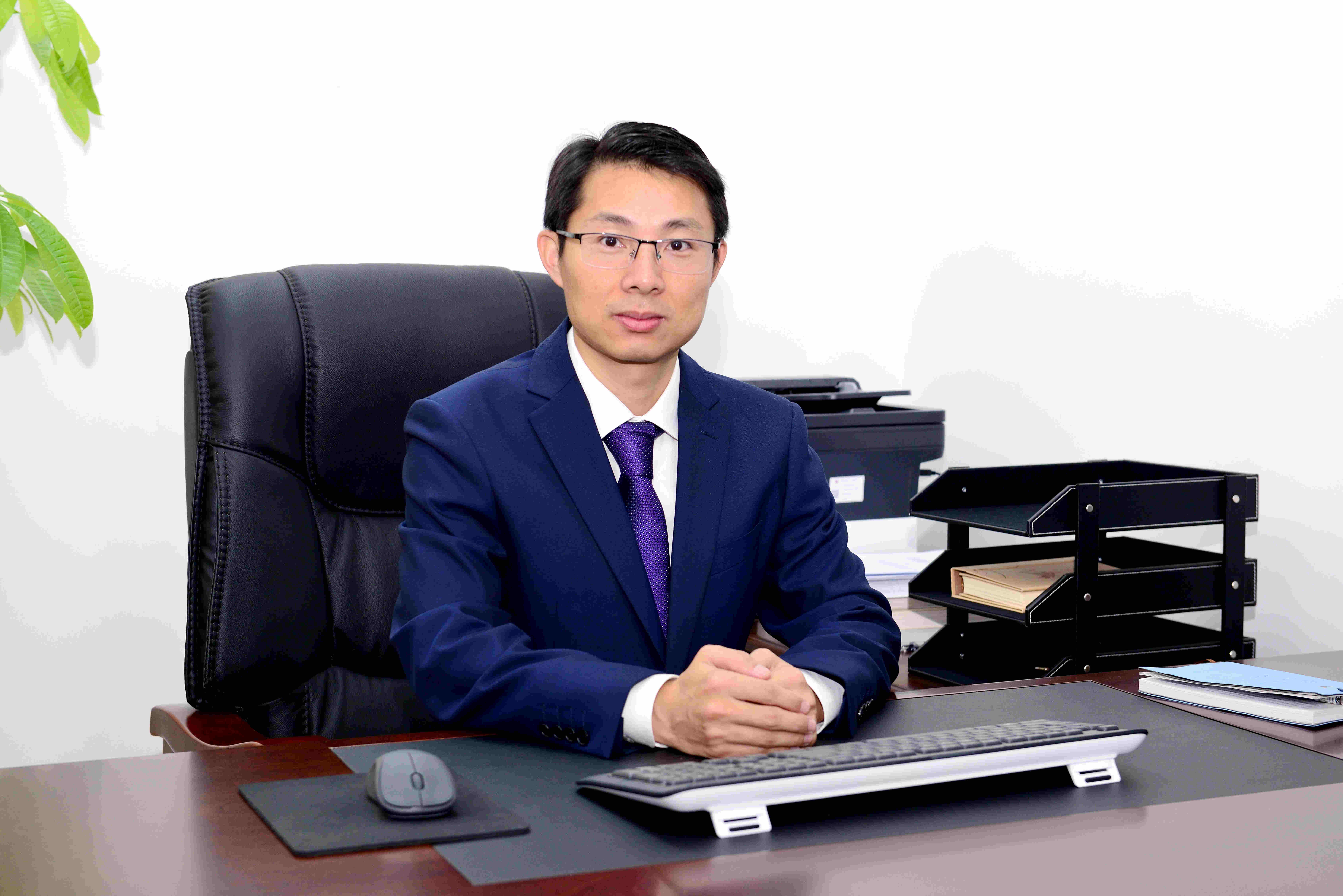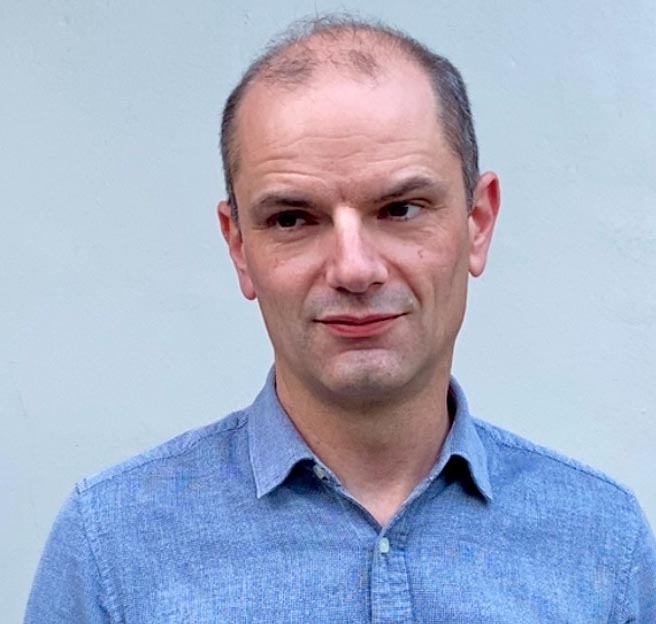News
EPJ ST: Jingting Luo new Editor on board
- Details
- Published on 13 May 2024

The publishers of The European Physical Journal Special Topics are pleased to announce the appointment of Professor Jingting Luo as new Editor in the board.
Jingting Luo received the Ph.D. degree from Tsinghua University, Beijing, China, in 2012.
He worked as an Academic Visitor with the Faculty of Engineering and Environment, Northumbria University, Newcastle upon Tyne, U.K., in 2016.
Since 2012, he has been working as a Researcher with Shenzhen University, Shenzhen, China, where he is currently a Professor with the College of Physics and Optoelectronic Engineering. He is the Director of Shenzhen Key Laboratory of Advanced Thin Films and Applications.
He has published over 150 science citation index (SCI) journal articles and more than 20 high cited articles. He has extensive experience in thin film materials and devices, including optoelectronics thin film and solar cells, thermoelectric thin film and devices, smart thin films, biomedical microdevices, lab-on-chip, MEMS, sensors and microfluidics.
EPJ D Highlight - Probing neptunium’s atomic structure with laser spectroscopy
- Details
- Published on 08 May 2024

A new technique developed by researchers in Germany can measure ionisation states of this element more precisely than before, with implications for its detection and remediation in radioactive waste.
The radioactive element neptunium is one of the principal components of nuclear waste. Mass spectrometry can be used to probe its complex atomic structure, which is of value both for its intrinsic interest and for determining the isotope composition of neptunium waste. Magdalena Kaja at Johannes Gutenberg University, Mainz, Germany and her co-workers have now demonstrated a novel method of laser spectroscopy that can analyse the ionisation potential of neptunium more precisely than earlier methods. This work is now published in the journal EPJ D.
EPJ H Highlight - Quantum Gravity, Effective Field Theory, and Strings
- Details
- Published on 03 May 2024

A historical overview of different approaches to the quantum theory of gravitation from the early twentieth century shows how they have been combined to set our modern view of a unified ‘theory of everything’.
Gravity is one of four fundamental interactions. The most precise description of this force is still provided by Einstein’s General Theory of Relativity, published in 1915, an entirely classical theory. This description sets gravity apart from the other three forces - strong, weak, and electromagnetism - all described by quantum fields. Therefore, any attempt to unify the four forces must depend on a description of gravity that uses the principles of quantum mechanics. This has been an active area of theoretical physics since the 1930s. A historian and a physicist, Alessio Rocci from VUB in Brussels and Thomas Van Riet from KU Leuven in Belgium have set out a historical overview of the development of quantum theories of gravity to explain our current view on a future unified theory of the four forces. This work has now been published in the journal EPJ H: Historical Perspectives on Contemporary Physics.
EPJ Plus Highlight - A guide for early-career researchers in computational science
- Details
- Published on 03 May 2024

A new article offers a valuable guide for new graduate students starting out their careers in computational science.
In recent years, a growing number of students have embraced scientific computation as an integral component of their graduate research. Yet since many of them are new to the field, they often have little to no coding experience, or any prior knowledge of computational tools. For many students starting out in the field, this can seem daunting, and leaves them unsure of where to start.
In a new article published in EPJ Plus, a team led by Idil Ismail, a current graduate student at the University of Warwick, UK, present an introductory guide to the field for researchers embarking on new careers. The team's work will help new graduate students to navigate the complexities of scientific computation science as they begin their journey in computational science research and could ultimately help the wider field to become more transparent and inclusive.
Konstantinos Bachas joins the EPJ Scientific Advisory Committee (SAC)
- Details
- Published on 03 May 2024

The Scientific Advisory Committee of EPJ is delighted to welcome Professor Konstantinos Bachas, as the new representative for the Hellenic Physical Society.
Konstantinos (Dinos) Bachas is an Associate Professor at the University of Thessaly in Greece, specializing in experimental high energy physics. His research focuses on topics related to the physics of the LHC at CERN and the ATLAS experiment. These include searches for new physics using advanced statistical methods, Standard Model measurements mainly in diboson production channels, and various simulation and reconstruction tasks for the ATLAS Muon Spectrometer. In recent years, his experimental efforts have involved the use of machine learning techniques for analyzing high energy physics data, exploring searches for hypothetical resonances, and searching for new physics within the context of Effective Field Theories.
Outside of his research, Professor Bachas is dedicated to education and outreach, having taught a wide range of courses from accelerators and detectors in nuclear and particle physics to the experimental foundations of elementary particle physics.
EPJ Web of Conferences Highlight - WONDER-2023 - 6th International Workshop On Nuclear Data Evaluation for Reactor applications
- Details
- Published on 25 April 2024

To describe the path of neutrons in the material but also the chain reactions that take place in a reactor and the changes in the composition of matter due to nuclear reactions, neutronics uses computer codes.
These codes have also acquired such a level of performance since the last two decades that the main source of uncertainty in neutronic calculations comes today from nuclear data.
In this context, the 6th edition of the International Workshop On Nuclear Data Evaluation for Reactor applications (WONDER-2023), organized by the CEA-IRESNE and the Cadarache center, in collaboration with the NEA (Nuclear Energy Agency of the OECD) and with the support of the “Aix-Marseille metropole”, was held in Aix-en-Provence (France), on June 2023.
EPJ Plus Highlight - Describing growing tissues in the language of thermodynamics
- Details
- Published on 17 April 2024

New analysis shows how key properties of biological tissues can be accurately described in the mathematical language of Onsager’s variational principle, widely used to describe continually changing systems in thermodynamics.
A key feature of biological tissues is their inhomogeneity and their ability to grow via cell reproduction. To study this behaviour, it is important to describe it using equations, which account for factors including growth rates, chemical signalling, and tissue structure.
In doing this, researchers aim to develop consistent continuous descriptions of these deeply complex systems: accurately predicting properties such as cell reproduction rates, disorder, and how their growth varies in different space directions, depending on their interactions.
Through new analysis published in EPJ Plus, Joseph Ackermann and Martine Ben Amar at Sorbonne University Paris, show that tissue development can be reliably captured within ‘Onsager’s variational principle’: a mathematical framework used widely in thermodynamics.
EPJ D Highlight – Estimating uncertainty in atomic spectroscopy
- Details
- Published on 17 April 2024

A numerical toolbox offers a robust way to evaluate uncertainty in atomic wavelength measurements.
If you repeat a measurement with the same or different instruments, you’ll get slightly different numbers each time. Estimating the uncertainties associated with these numbers turns them into an informative result. In a study published in EPJ D, Alexander Kramida, of the National Institute of Standards and Technology in Maryland, USA, now explains a new statistical approach for estimating the uncertainty associated with atomic spectroscopy measurements. He discusses how this approach can be applied both to measurements of spectral line wavelengths, and to other atomic properties that are indirectly determined from them.
EPJ Web of Conferences Highlight - mm Universe 2023 - Observing the Universe at mm Wavelengths
- Details
- Published on 11 April 2024

The mm Universe 2023 conference is the third edition in a series of biennial workshops. It is devoted to the observations of the sky at millimetre wavelengths, which has contributed to tremendous improvements in our understanding of a great variety of scientific topics ranging from the star formation in the Milky Way to the measurement of cosmological parameters.
The mm Universe 2023 conference held in Grenoble (France), from 26 to 30 June 2023, has been organized by LPSC (CNRS and Université Grenoble Alpes). With more than a hundred of attendees from 14 countries, it brought together the scientific community working on topics related to the mm Universe, spanning from stellar to cosmological scales.
EPJ ST Highlight - CompactLight: Designing a Cost-Effective XFEL Facility
- Details
- Published on 10 April 2024

An international group of experts has produced a design for a free electron X-ray laser facility that is significantly smaller and cheaper than those that are currently in use.
Very many advances in structural science since the 1970s were made by probing materials with synchrotron radiation: that is, high energy X-rays generated through accelerating high-energy electrons. The latest generation of such sources, X-ray free electron lasers (XFEL) are far more powerful than their predecessors, but are only accessible to international consortia and a few rich countries because of their high cost. Now, an international group of experts have prepared a design for a more compact and cost-effective XFEL system, accessible to small countries and, perhaps, some individual laboratories. The design is published in EPJ Special Topics (EPJ ST).





